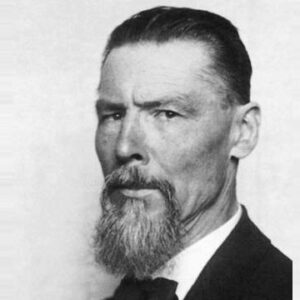Joze Plecnik was a prominent Slovenian architect who strove to recreate ancient Athens in Ljubljana. His works drastically reshaped the identity of Ljubljana, Slovenia’s capital, and are associated with the Vienna Secession style of architecture. Plecnik was a pupil of the legendary architect Otto Wagner and was noted for his inventive and original designs that combined aspects of classical architecture and folk art traditions. He is credited with designing several groundbreaking works of contemporary architecture and has left an indelible mark on the architecture of not just Ljubljana, but also Vienna and Prague throughout Europe. Despite the fact that he only worked on a few projects in Prague, he became famous for his work renovating the Prague Castle for use as the presidential palace. He also worked as a teacher at the Arts and Crafts College, where his innovative teaching methods inspired a generation of young artists and architects. As an architect, he was responsible for the full transformation of Ljubljana, which was in desperate need of a makeover after the long Baroque period. By designing significant constructions like the Triple Bridge over the Ljubljanica and the landmark Slovene National and University Library, he gave the city a modern, visitor-friendly identity.
Childhood and Adolescence
Joze Plecnik, the fourth child of carpenter Andrej Plecnik and his wife Helena, was born on January 23, 1872, in Ljubljana.
He began working in his father’s workshop after finishing elementary school in Ljubljana and also attended trade school. Later, he studied drawing under Leopold Theyer and worked as a furniture designer for J. W. Müller in Vienna.
From 1894 to 1897, he studied under the famed Viennese architect and educator Otto Wagner, with whom he also worked for a period.
Joze Liecnik’s Career
He spent the majority of his early career in Vienna, where he completed notable buildings such as the Langer House (1900) and the Zacherlhaus (1903–1905).
His works were defined by Secession characteristics from the start, despite being designed in a modern style. He was also a very creative and original person who, as he acquired expertise, developed his own distinct style.
He began work on the ‘Church of the Holy Spirit in 1910, and the project would be completed in 1913. The unusual design of the church’s crypt, with its slender concrete columns and angular, cubist capitals and bases, drew a lot of attention.
He began a career as an instructor in addition to his work as an architect. In 1911, he relocated to Prague to take up a teaching position at the Arts and Crafts College.
He proved to be an excellent teacher, inspiring a number of young and aspiring artists and architects to further their education. He stressed both classical architectural ideas and folk art traditions.
Palenik was named the main architect for the 1920 reconstruction of Prague Castle by Tomá Masaryk, the Czech President at the time. He worked on different projects around the famed castle for the next 14 years, including garden and monument improvements.
He created a variety of unique interior spaces as well as monuments and sculptures. Plecnik Hall, completed in 1930 and featuring three levels of abstracted Doric colonnades, became particularly well-known.
In 1921, the Ljubljana School of Architecture was founded in his birthplace of Ljubljana, and he was invited to join as one of the school’s initial faculty members by fellow architect Ivan Vurnik.
Joze Plecnik was also requested to work on the city’s reconstruction while in Ljubljana. He set about fully rebuilding the city, making it into a lovely and wonderful destination for visitors. He was given adequate financial backing for his efforts, and the authorities were pleased with the way he transformed the city’s appearance.
Despite adhering to classical architectural principles, he filled his works with his distinctive and innovative ideas in order to give Ljubljana its modern personality. He created the Slovene National and University Library, the Vzajemna Insurance Company Offices, the Ljubljana open market structures, the Ljubljana cemetery, and, most notably, the ‘Triple Bridge’ over the Ljubljanica and the market along the riverbank as part of this vast project.
Even though he continued to teach well into his seventies, his responsibilities were significantly restricted due to his advanced age. He concentrated on smaller projects like fountains and church repairs in his final years.
Joze’s Major Projects
He designed many of Ljubljana’s landmark structures, giving the city its modern flair. Slovene National and University Library, Vzajemna Insurance Company Offices, Ljubljana open market structures, Ljubljanica River banks, parks, plazas, and other locations are among them.
Achievements and Awards
In 1904, he received a gold medal for his salon at the World’s Fair in St Louis, Missouri, USA.
Personal History and Legacy
He had a long life, dedicating the majority of it to his favorite vocation, and died in Ljubljana on January 7, 1957, at the age of 84.
Estimated Net worth
Joze is one of the wealthiest architects and one of the most well-known. Joze Plecnik’s net worth is estimated to be $1.5 million, according to Wikipedia, Forbes, and Business Insider.
Trivia
Google released a doodle of the Triple Bridge, which was created by Palenik, on the 140th anniversary of his birth on January 23, 2012.


